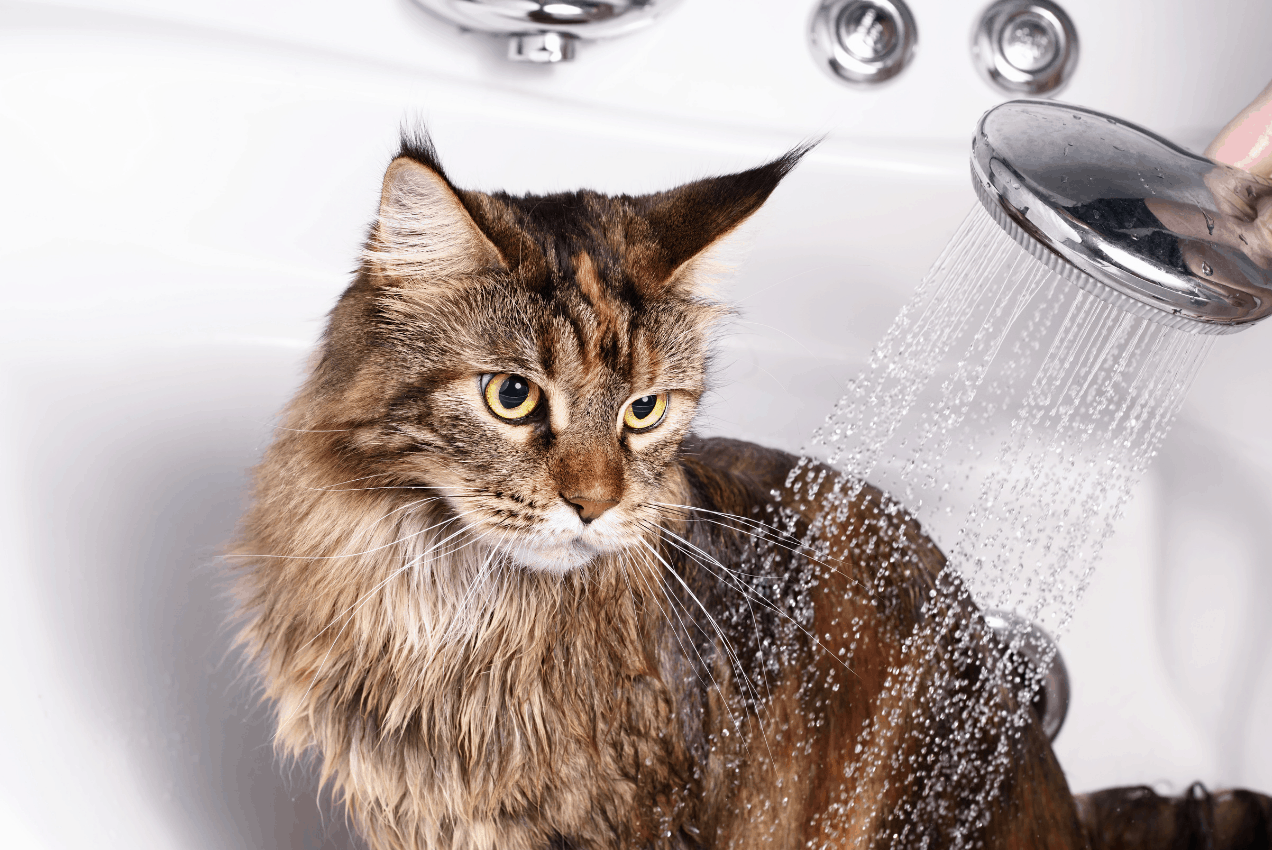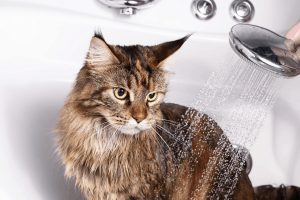When Should You Bathe Your Cat?


Many big cats, like tigers and jaguars, genuinely enjoy being near water. Their smaller, domestic counterparts often do not have the same traits. Housecats have developed coats that absorb moisture whereas big cats have hair that deflects it. Cats kept as pets may avoid water since it is difficult to dry off after becoming wet. Although cats generally dislike water, there are certain things you can do to assist your cat endure it if you must bathe her.
When Should Cats Get Bathed?
The bad news is that cats often dislike bathing since they tend to be afraid of water. The good news is that most of the time your cat doesn’t even need to be bathed. Cats are particularly good at keeping themselves clean by self-grooming in everyday situations.
However, this does not imply that cats require no upkeep at all. For the purpose of removing loose hair and preventing matting, you should brush your cat frequently. The length of your cat’s fur will determine how frequently you should brush him. Cats with long hair require daily, or perhaps multiple times per week, brushing. Cats with short hair only need to be brushed once each week.
Baths shouldn’t be a frequent component of your cat’s grooming regimen. In fact, giving cats unnecessary washes might make them anxious and stressed out. However, there may be unusual situations when you feel bathing your cat is required or where your veterinarian advises against it. For cats under 10 weeks old and ineligible for conventional treatments, baths may be required to control fleas. Additionally, if your cat has become really unclean or has gotten into anything that may be harmful for her to consume while grooming herself, a bath may be essential. For instance, an inquisitive cat would attempt to climb the chimney and end up smeared in soot.
How Should a Cat Be Bathed?
Calling your veterinarian should always come first when you suspect your cat would benefit from a wash. He or she can decide if a bath is required. Following your decision, follow these suggestions to make the procedure simpler for both you and your pet.
1. If at all possible, brush your cat before bathing. This keeps extra fur from falling down the drain and blocking your pipes while also clearing away any dirt or debris from his fur. You can omit this step, though, if your cat has gotten into anything sticky and you are unable to brush through his fur. Under these conditions, attempting to brush him is ineffective and could even make him feel worse.
2. If you try to give your cat a bath because they dislike water, they can try to attack you. Wear rubber gloves when bathing your cat and, if possible, trim her toenails beforehand to avoid getting scratched.
3. If at all feasible, give your cat a wash in the sink as opposed to the bathtub. It may be less intimidating for him to use a tiny sink rather than a large bathtub, and it is more convenient for you to be able to stand upright at the sink rather than hunch over the tub when giving your cat a wash.
4. Bathing your cat doesn’t require a lot of water. The sink’s bottom should have two or three inches of space. Additionally, turn on the water before putting your cat in it. Otherwise she can be terrified by the water rushing.
5. Before turning on the water, place a rubber mat or a folded towel in the sink. This provides some traction for your cat’s feet and makes him feel safer while getting a bath.
6. If your cat gets dirty by sticking her paw, nose, or tail anywhere it shouldn’t be, simply wash the soiled area. This shortens the process and makes it less stressful. If your cat is filthy all over or the wash is being done to control fleas, this guideline does not apply.
7. Use a plastic cup or a pitcher to pour water over your cat to get her wet. Avoid splashing or pouring water in your cat’s face. Instead, carefully wipe this region with a moist towel, being very careful around the delicate ears and eyes.
8. When giving your pet a wash, only use cat shampoo to clean them. Human-made products could hurt the cat’s skin or be poisonous if he licks them off. Following a wash, cats frequently lick themselves to hasten the drying process of their fur.
9. After giving your cat a gentle wash and scrape, make sure to properly rinse her off. After a wash, your cat shouldn’t lick herself to absorb excessive amounts of cat shampoo since any leftover shampoo in the fur may attract additional filth and need another bath or irritate the skin.
10. After giving your cat a bath, make sure to completely dry him off. If he is still a kitten, this is extremely crucial since he might become dangerously chilly. Set out a bath towel next to the sink before taking a bath. After you have done washing your cat, remove him from the sink, set him down on the towel, and wrap it around him to completely dry him. Until your cat is entirely dry, keep him in a warm space.
Give your cat a treat once the wash is done if she performs well. In your cat’s head, this could create a favorable connection with washing, making it simpler the next time if you ever have to do it.
Petstup is an official seller of the many well-known pets brands, focused on improving the lives of pets, pet parents and our partners. We proudly offer a large variety of pet nutrition products and supplies competitively priced for dogs, cats, reptiles, fish, birds and small animals. Petstup is your one stop shop for all your pet’s needs. All our products are authentic, and pass all mandatory United States standards and veterinary practices. We run several warehouses across the United States to serve you better and faster.




















